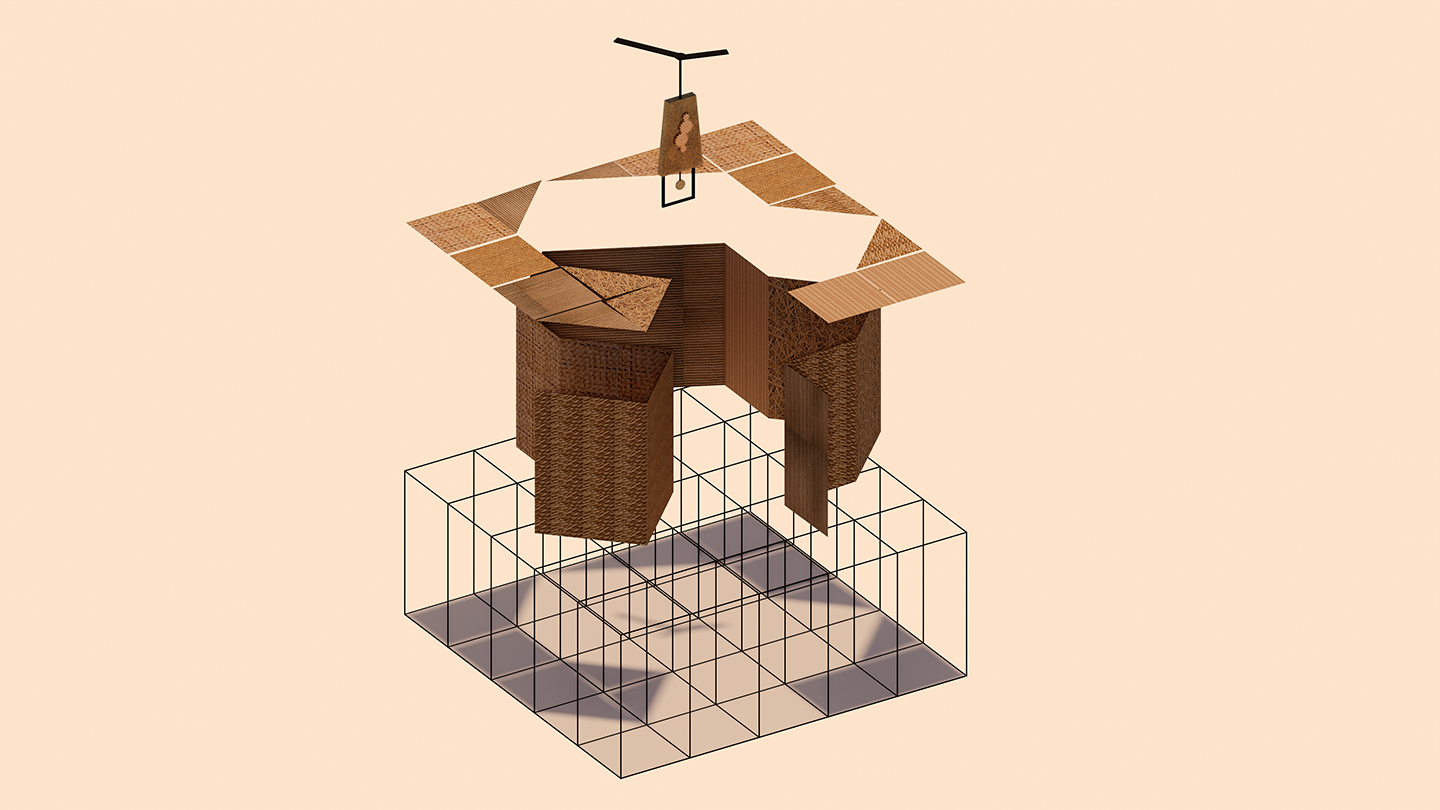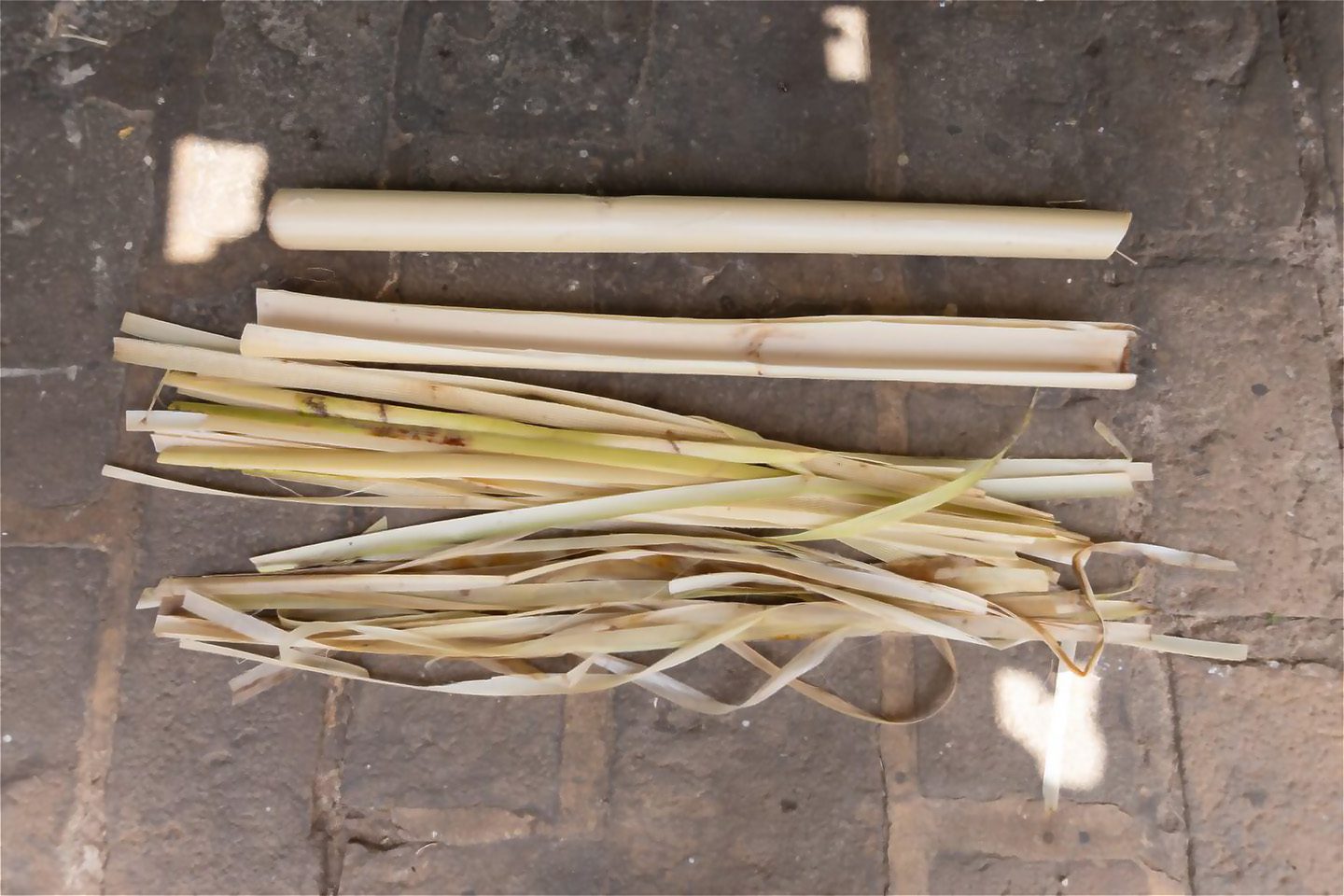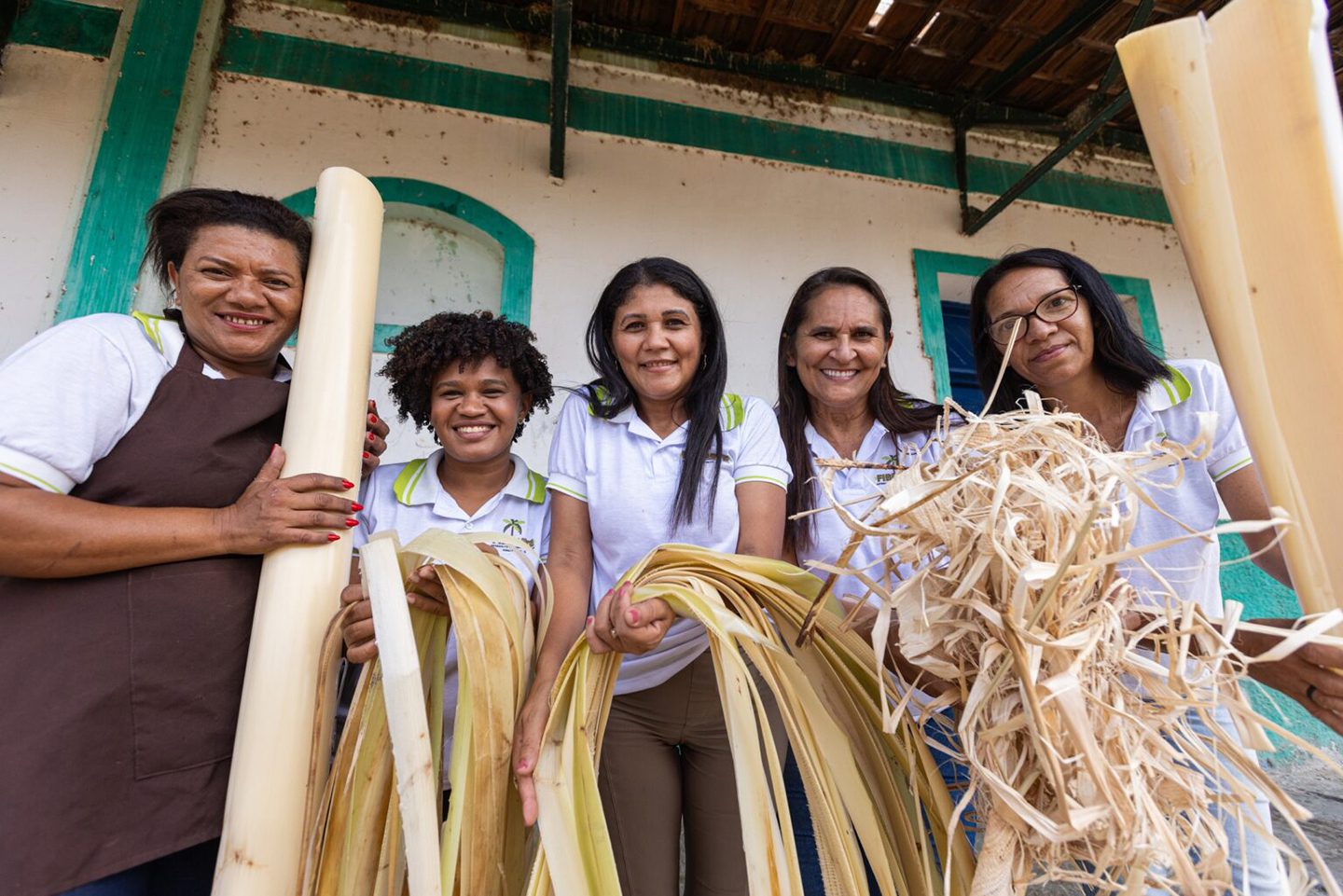Project implementation: Brazil
Project development: Brazil
The AzulPitanga pavilion emerges from the contrast between the rigor of industrial production and the delicacy of manual labor. Its structure is defined by a modular 1x1 meter grid, which repeats until it forms a 4x4 meter space, supported by 2.10 meter-high steel rebar pillars. This regular, industrial, and rational grid supports planes of hand-woven banana fibers, which run through the structure in different directions. The weaves vary in density and opacity, filtering light, marking paths, and creating permeable surfaces that give the space a vibrant texture.
The spatiality is organized based on an unconventional duality: the covered perimeter forms a shaded and protected "outside," while the uncovered center reveals the void as an "inside," open to light and expanded vision. At the heart of the pavilion, a mechanical tower clock introduces the dimension of time. Winding, it must be activated periodically during the exhibition. Thus, it marks industrial time, the time of nature, and the time of craftsmanship—times that here intersect in the same spatial fabric.
The fiber lining the pavilion is produced by Fibrarte, an artisans' association from Missão Velha, Ceará, Brazil's eighth-largest banana producer. Fibrarte transforms what would otherwise be banana waste into raw materials. The mechanical clock was installed by Geraldo Freire of Metalúrgica Freire in Juazeiro do Norte, a leading manufacturer and maintainer of clocks and tower bells.




